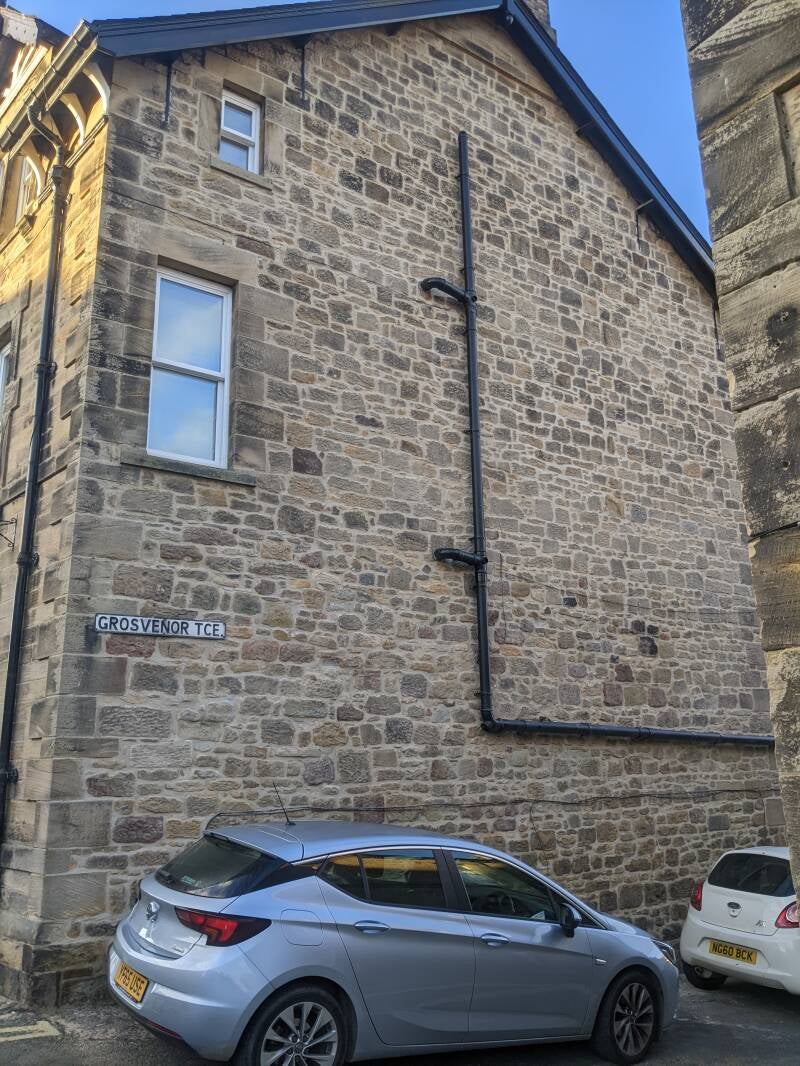
Repointing
What is repointing?
Repointing is the refilling of the outer part of the joints where the previous mortar has weathered away or has been removed because it is unsuitable. Some older brick and stone buildings show signs of having been repointed at different times, often with a variety of mortar mixes and styles.
Why is repointing important?
Repointing can significantly affect not only the look but also the durability of masonry. If done badly or using the wrong materials, it can damage stone and brickwork, sometimes beyond repair.
Why is repointing necessary? Masonry walls need to be able to regulate water penetration and evaporation. If the condition of the mortar joints is poor or if the wrong mortar has been used for repointing in the past, then this process can be compromised.
There are three main reasons for repointing:
Mortar joints are crumbling or loose.
Mortar joints are open or have weathered back to such an extent that the edge of the masonry units are exposed forming a ledge that encourages water to seep into the masonry
A hard impermeable cement-based mortar (usually grey in colour) has been introduced trapping moisture and accelerating the deterioration of the masonry. Mortar of this type should only be removed if this can be done without causing even more damage to the adjoining masonry. The style of repointing may also be visually unsuitable.
Get in touch now if you have any of these problems with your masonry and we can give you a competitive quote.

Lime Mortar Repointing
Traditionally stone and brick buildings were built and repointed using lime mortar. The soft and permeable qualities of lime mortar allow for any movement in the structure and ensure moisture in the walls can freely evaporate. As lime mortar is generally softer than stone, occasional repointing is necessary at both low level (due to salt attack) and at higher levels like copings, string and weathering’s (due to water erosion). Lime mortar, especially putty lime mortars can become soft and friable with age but this does not necessarily mean they are not functioning.
Unfortunately, over the last 150 years or more, Portland cement based mortars have commonly been used for repointing joints that were previously filled with lime mortar. Strong cement mortars are invariably too hard for limestone, they can cause damage and being grey are drab and unsightly. Wherever possible they should be removed and replaced with lime mortar which allows the wall to ‘breathe’. The typical cream, buff, pale brown, pink and white lime mortars which reflect the local sand colour, are much more in keeping with the colours and textures of stone and brick.

Wall repairs
Brick wall repairs necessitate a systematic approach to maintain both structural integrity and visual appeal. Initial assessment is crucial to identify damaged bricks, mortar erosion, and potential causes such as water infiltration or structural shifting. Repair tasks typically involve replacing damaged bricks, repointing mortar joints to prevent moisture penetration and further degradation, and addressing any underlying issues like drainage problems or foundation settling. Skillful execution of brick wall repairs ensures the longevity and aesthetic appeal of the wall, preserving its strength and character.
Stone repairs
Stone wall repairs require careful attention to detail to ensure the structural integrity and aesthetic appeal of the wall. Before commencing repairs, it's essential to thoroughly assess the damage, identifying loose or cracked stones, mortar deterioration, and any underlying issues causing the damage. Repairs typically involve repositioning or replacing loose stones, repointing mortar joints to prevent water infiltration and further deterioration, and addressing any underlying issues such as drainage problems or foundation settling. Properly executed stone wall repairs not only restore functionality but also preserve the charm and character of the wall for years to come.

Masonry Cleaning
Masonry cleaning is a vital process to restore the appearance and longevity of structures built with materials like brick, stone, or concrete. It involves removing dirt, grime, stains, and biological growth from the surface of the masonry without causing damage. Various methods such as pressure washing, chemical cleaning, or abrasive techniques may be used depending on the type and condition of the masonry. Proper cleaning not only enhances the aesthetic appeal of the structure but also helps prevent further deterioration by removing substances that can accelerate decay. Careful consideration of the masonry type and appropriate cleaning methods ensures effective results while preserving the integrity of the material.
Mortar Matching
Mortar matching is a crucial aspect of masonry restoration, ensuring seamless repairs and maintaining the visual harmony of structures. It involves carefully selecting the appropriate mortar type, colour, texture, and strength to closely match the existing mortar in the historic or older masonry. Matching mortar properties such as composition and consistency is essential to preserve the structural integrity and aesthetic appeal of the original construction. Skillful mortar matching techniques result in cohesive repairs that seamlessly blend with the surrounding masonry, enhancing the overall appearance and longevity of the structure.
Crack Stitching
Crack stitching is a method used in structural repairs to reinforce and stabilise cracked masonry or concrete elements. It involves installing metal or composite bars across the length of the crack, typically embedded in a bed of specialised adhesive or grout. The stitching bars bridge the crack, distributing loads and preventing further movement or widening. This technique effectively restores the structural integrity of the damaged element, minimising the risk of future deterioration or failure. Crack stitching is commonly employed in buildings, bridges, retaining walls, and other structures where cracks have formed due to various factors such as settlement, thermal expansion, or seismic activity.

